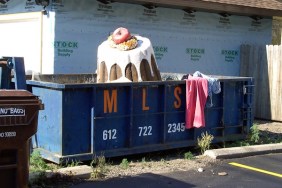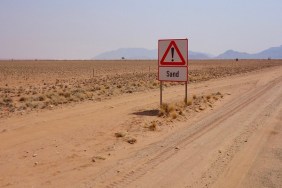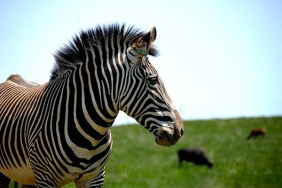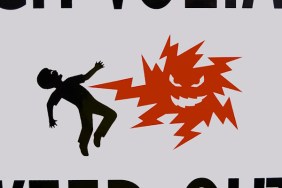Wouldn’t you love to be king of a Caribbean island? Whether you’ve got islomania – a strong attraction to islands – or are just daydreaming about getting away, you’ve got to admit that islands are mysterious, fascinating and somehow irresistible. From a sinking paradise in the Pacific to an abandoned former coal mine in Japan, here are 10 of the world’s most incredible natural private islands and island nations.
The Sinking Island Nation of Maldives
(images via: National Geographic)
The Maldives is one of the most beautiful island nations in the South Pacific, but it likely won’t be around much longer. The archipelago of almost 1,200 coral islands is just 4.9 feet above sea level, and they’re expected to shrink dramatically as sea levels rise due to global warming over the next century. The government hopes to set aside some of the $1B it rakes in annually from tourism to buy a new home for the nation.
Largest Island within a Lake on an Island within a Lake on an Island
(images via: Treks.org)
A lake island on the interior of the island of Newfoundland is the 18th largest lake island in the world, but that’s not what makes it remarkable. Glover Island is located on Grand Lake, and has seven lakes of its own. Within one of those lakes is yet another island, making it an island within a lake on an island within a lake on a island. A similar island called Vulcan Point is located in the Phillipines.
Nauru, the World’s Smallest Independent Island Country
(images via: WebUrbanist)
Nauru, located about 2,500 miles southwest of Honolulu just south of the Equator in the Pacific Ocean, is the world’s smallest independent island country at just 8 square miles. Nauru once had the highest per-capita income in the world due to its rich phosphate stores, but by 2006 the stores were depleted and the island has been an environmental wasteland ever since. To make money, the island nation briefly became a tax haven and money laundering center until striking a deal with the Australian government to take in asylum seekers trying to get to Australia.
Redonda Island, a Tiny Uninhabited Micronation
(images via: Marinas)
The tiny Caribbean island of Redonda, which lies about 35 miles southwest of Antigua, is more or less uninhabitable due to a lack of freshwater and the island’s steep, rocky terrain. Yet that didn’t prevent Redonda from becoming a micronation, thanks to a fantasy fiction author named M.P. Shiel who claimed that his father had legally declared himself “King’ of the island in the 19th century. The story is likely fictional, but it gave way to Redonda’s questionable status as a micronation. To this day, there are people who claim to be the sole legitimate King of Redonda, though their claims appear to be hoaxes.
Bouvetøya, the World’s Most Remote Uninhabited Island
(images via: WebUrbanist)
From WebUrbanist: “Bouvet is the remotest uninhabited island in the world. Is roughly 75 square miles of surface is mostly covered by glaciers and and very little survives on the island aside from moss, seals, seabirds and penguins. However, the island has been at the center of some peculiar mysteries. An early discoverer of the island documented second island nearby that was never seen again. In the 1960s an abandoned lifeboat was found on the island, though nothing was ever seen of its passenger. In the above satellite images, it can only be picked out by spotting disturbances in the weather patterns.”
Pitcairn Island, Home of Descendents of Bounty Mutineers
(images via: Wikipedia)
The Pitcairn Islands are most famous for their inhabitants: the descendents of bounty mutineers and the Tahitians who accompanied them. In 1790, the mutineers of the Bounty and their Tahitian companions, some of whom may have been kidnapped, settled on Pitcairn Island and set fire to the Bounty, which can still be seen underwater in Bounty Bay. Most of the mutineers and Tahitian men were killed by alcoholism, disease and murder while the rest of the population went on to live relatively peacefully. The Pitcairn Islands became a British colony in 1838 and are now the last British overseas territory in the Pacific.
Gunkanjima, Japan’s Forbidden Ghost Island
(images via: BLDG Blog)
Gunkanjima Island, formally known as Hashima Island, was once nothing more than an uninhabited coral reef, but with the discovery of coal came settlers who built coal mines and tall concrete apartment buildings. The miners continually expanded the island artificially until it came to resemble a battleship from afar, hence its new nickname, Gunkanjima, or Battleship Island. Gunkanjima had the highest population density on earth not half a century ago when it was owned by Mitsubishi, but it was abandoned in 1974 and remains empty and bare. Travel to the island is prohibited.
Venice, a Group of Seminatural Islands
(images via: Trek Earth)
We couldn’t write about cool islands without mentioning one of the most famous groups of islands in the world: Venice. Once an independent nation, Venice is often cited as one of the world’s most beautiful cities. Stretching across 118 small islands in the Venetian Lagoon along the Adriatic Sea in northeast Italy, Venice was once a powerful republic and a crucial center of commerce, particularly between Europe and Asia. Its buildings, which are held up by closely spaced wooden piles, began sinking rapidly during the 20th century, and though the pace has since slowed down, the Italian government is still seeking ways to protect the city.
Nygard Cay, Mayan Treehouse Playground of the Rich
(images via: Unusual Villa Rentals)
Nygard Cay may just be one of the most fascinating private islands in the Caribbean, but you’ll never see it in person unless you’ve got $42,000 per day to drop. The entire 6-acre island is covered in Mayan-inspired structures including treehouses, slides and a ‘human aquarium’. If you’ve got the cash to live like Oprah, Sean Connery and Robert DeNiro, you can be picked up anywhere in the world in Peter Nygard’s own private Boeing 727.
Floating Island Paradise Made from Plastic Bottles
(images via: Ecoble)
Ok, so this one isn’t a natural island – it’s man-made. But it’s just way too cool not to mention. Back in 1998, Richie Sowa accumulated 250,000 plastic bottles and used them to build his very own private island in Mexico. Sowa, an environmentalist, created the floating Spiral Island by attaching the bottles to a bamboo frame and plywood platform, upon which he built a two-story home. The original 66’x54’ Spiral Island was destroyed by a hurricane, but Sowa is currently rebuilding it.





